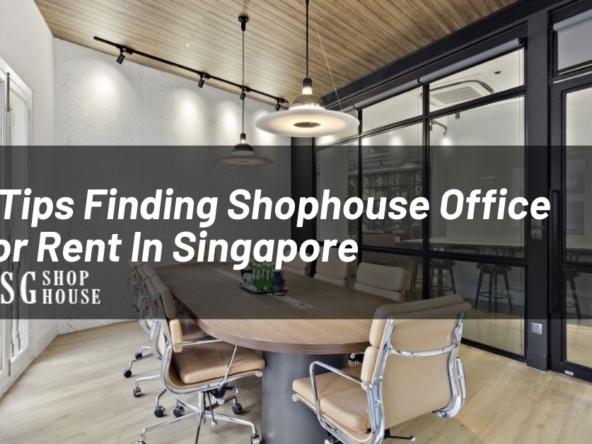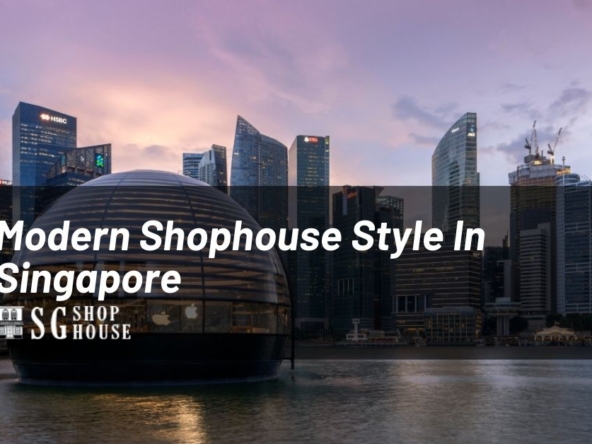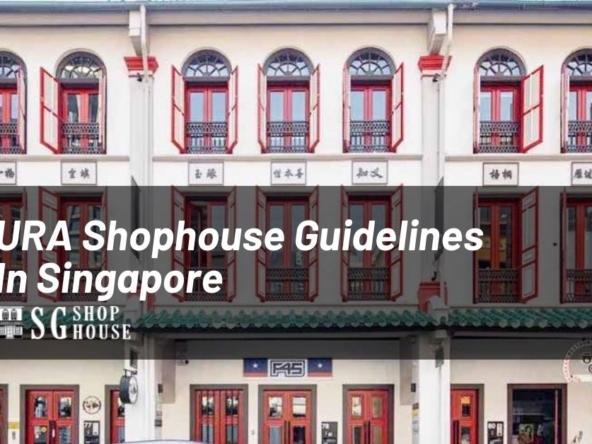A shophouse is a building type serving both as a residence and a commercial business. It is defined in the dictionary as a building type found in Southeast Asia that is “a shop opening on to the pavement and also used as the owner’s residence”, and became a commonly used term since the 1950s. Variations of the shophouse may also be found in other parts of the world; in Southern China, Hong Kong, and Macau, it is found in a building type known as Tong Lau, and in towns and cities in Sri Lanka. They stand in a terraced house configuration, often fronted with arcades or colonnades, which present a unique townscape in Southeast Asia, Sri Lanka, and south China. In this article, you will get to know the Shophouses In Different Countries In Heritage Area.
1.Heritage Shophouses In Malaysia
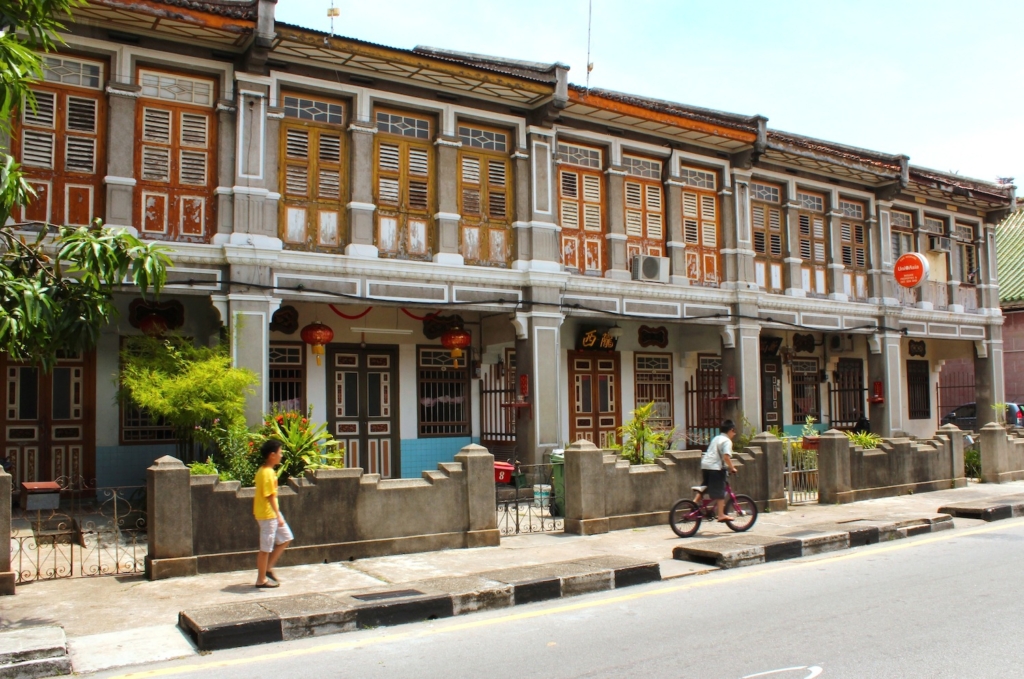
While the preservation of historic shophouses suffered substantially in heavily developed states like Johor, Kuala Lumpur, Negeri Sembilan, Perak, and Selangor, shophouses in Malacca and Penang (which state capitals, Malacca Town and George Town, gazetted as UNESCO World Heritage Sites in 2008) received more care and attention due to emerging historical preservation movements in both states, experiencing similar levels of rejuvenation as in Singapore. However, the gentrification of both cities led to older tenants of shophouses being driven out by the rising costs of renting or buying properties within historical districts. In 2012, the cost of buying a pre-World War II shophouse in George Town reached RM2,000 per square foot (US$660), equivalent to the price of the most expensive Kuala Lumpur city centre condominium units.
Shophouses In Different Countries: Six Main Shophouse Styles In Penang
There are six main shophouse styles in George Town, Penang. Each style has distinctive architectural and decorative features that represent the different periods in George Town’s history.
1.Shophouses In Different Countries: Early Penang Style (1790S – 1850S)
General Characteristics and Structure:
- Single or two storeys with five-foot way
- Simple in detail and low
- Lime plaster on structural brick wall and pillars
- Square pillars supporting slanting beam (rafter) with projecting eaves
2.Southern Chinese Eclectic Style (1840S – 1900S)
General Characteristics and Structure:
- Two, sometimes three storeys with five-foot way
- Taller than Early Penang Style shophouse, simple decoration, but more decorative by 1900s
- Lime plaster on structural brick wall and pillars
- Square pillars ending with Chinese pillar head (bracket)
3.Early Straits Eclectic Style (1890s – 1910s)
General Characteristics and Structure:
- Two, sometimes three storeys with five-foot way
- Similar height as Southern Chinese Eclectic Style, mixture of Chinese and European decorations
- Lime plaster on structural brick wall and pillars
- Square pillars ending with Chinese pillar heads and later European pillar heads (capitals)
4.Late Straits Eclectic Style (1910S – 1940S)
General Characteristics and Structure:
- Two or three storeys with five-foot way, sometimes with a compound garden
- Generally shorter in height, with intensive use of both Chinese and European decorations
- Lime plaster either on structural brick wall and pillars or reinforced concrete construction
- Square pillars ending with either Chinese pillar heads (brackets), European pillar heads (brackets), or capitals
5.Shophouses In Different Countries: Art Deco Style (1930S – 1960S)
General Characteristics and Structure:
- Two storeys with five-foot way and compound garden for residence
- Similar height to Late Straits Eclectic Style. Simplified architectural features with either horizontal or vertical emphasis
- Shanghai plaster finish over reinforced concrete (RC) construction of beams and pillars with cement or clay brick infill
- Pillars and beams de-emphasized and incorporated into façade
6.Early Modern Style (1950S – 1970S)
General Characteristics and Structure:
- Two storeys for individual shophouse, three storeys for corner shophouse, and three storeys for row-houses designed to look like one building, mixture of commercial and residential
- Same proportion as Art Deco Style, simplified clean linear functional features e.g. shading canopies and fins
- Lime or cement flat plaster finish over reinforced concrete (RC) construction of beams and pillars with cement or clay brick infill
- Façade design and structure merged
- Five-foot way sometimes without pillars (cantilever upper
floor)
2.Shophouses In Hong Kong
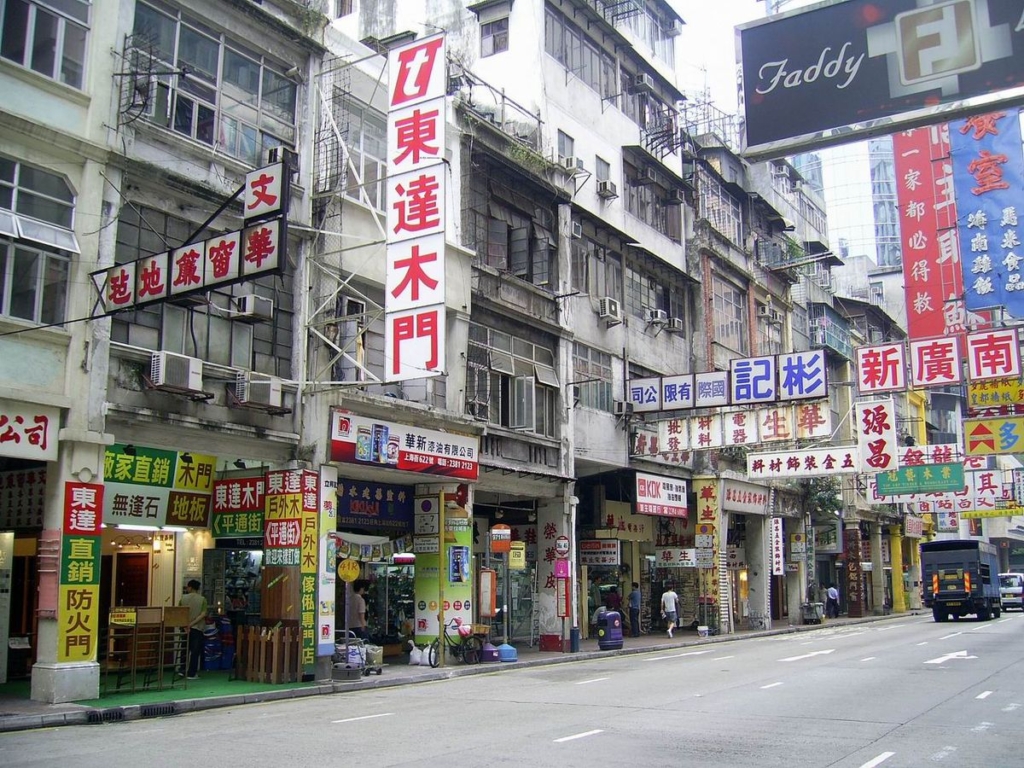
Shophouses In Different Countries: Definition of Tong Lau and Tenement House
Tong Lau (functioning as singular and plural; 唐樓, literally, “Chinese building”) belongs to the generic urban shophouse typology found in predominantly Chinese cities in Southern China and Southeast Asia, such as Hong Kong, Guangzhou, Macau, Singapore, and Penang. It is a typology that has infused with material, construction, and living traditions of Southern Chinese in 19th-century urban centres, particularly towns and cities in Guangdong and Fujian provinces. The prototype of this typology is the 19th-century urban shophouse of Southern China. This paper focuses on Tong Lau of Hong Kong built before the Pacific War (1941-45).
Early Tong Lau in Hong Kong (Pre-statutory Control)
The earliest form of Hong Kong Tong Lau found on the island’s major Chinese settlements, one of which was Tai Ping Shan. Prior to the bubonic outbreak in 1894, the design of these buildings was broadly similar in appearance and construction to those found in towns and cities of Southern China during this period. In Mr. Chadwick’s Report on the Sanitation Condition of Hong Kong, there is a section on “Chinese Houses,” which describes in detail with illustrations the Tong Lau in Tai Ping Shan in the 1880s.
Differences between Early Tong Lau in Hong Kong and their Counterparts in Southern China
Shophouses In Different Countries: Although the architecture of early Tong Lau in Hong Kong was broadly similar to those in Southern China, Chadwick observed that there were noticeable differences due to “European influence and example, but principally to the necessity for economy of space on account of the high price of land and the great cost of preparing level sites for building”. This means that the local conditions did have an effect in transforming even the early Tong Lau, which featured decorative elements inspired by Western Classical architecture and, more significantly, were more compact than their Mainland counterparts.
3.Shophouses In Different Countries: Shophouses In Taiwan
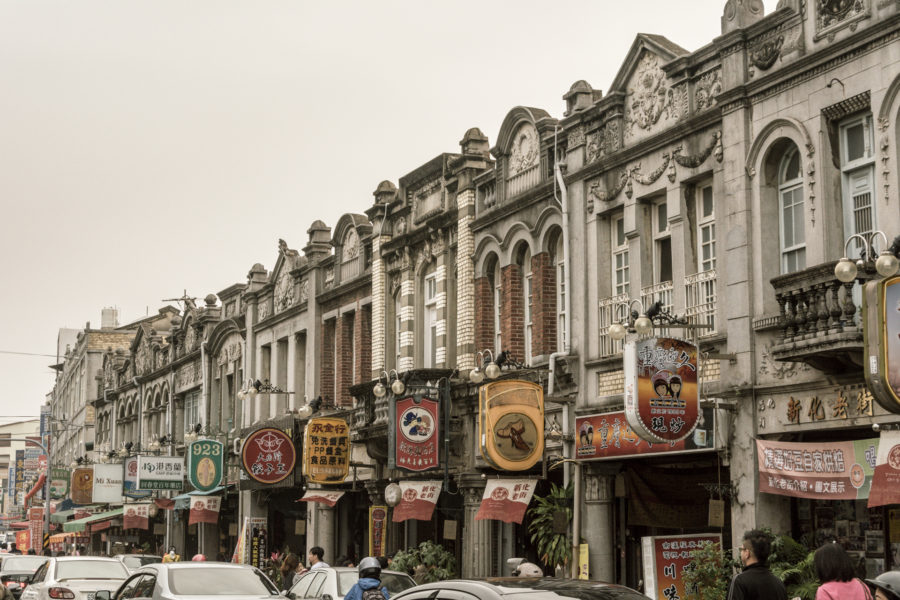
Xinhua Old Street
Throughout Tainan City, you can find Japanese-era shop houses with Baroque-influenced facades. This was modernity to Japanese architects and the style spread throughout the region. While these buildings are randomly scattered throughout Tainan City, in Xinhua Township there is a two or three-block stretch where almost every building follows this style. The facades are in great condition and really showcase the antiquity of Japanese-era modernity. The township of Xinhua and the surrounding area have a long history. Before the Japanese period, Xinhua was called Tavocan. Tavocan was an area of the Siraya plains aborigines dating back to a time before the Dutch era. During the 1920s, Xinhua blossomed commercially, largely due to wholesale fruit.
Today, the street is still active with traditional shops. It is a tourist area, but not much is set up for tourism. The shops still have the same ordinary activity you’d see in any small town in Taiwan. The only difference is the sense of nostalgia people can feel both inside the shops and along the street. For me, the real treat of this area is the signage. Uniform signs are hung above every shop showing off old illustrations that were really meant to guide the illiterate with clear depictions of what was for sale inside (something that would be useful for me in Tainan). Many are beautiful examples of old graphic design work, and some are just downright comical.
4.Shophouses In Shanghai
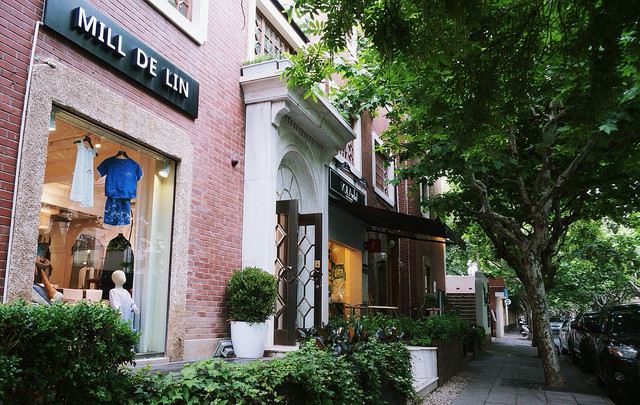
Sinan Road: More than Just the Zhougongguan
Shophouses In Different Countries: Sinan Road, formerly known as Massenet Rue, is a well-known French-style road. A clean, romantic, one-way street, where the mansions on both sides of the street are almost all Old Shanghai-style ones. Whether they are styled after the English, French or Spanish mansions, they depict a living tale of urban history. Today’s Sinan Road not only preserves “Zhougongguan” to commemorate Zhou Enlai, it also maintains the former residences of Sun Yat-sen and his wife Song Qingling, and the “Mei Mansion” of Peking Opera master Mei Lanfang. It also preserved the Sinangongguan, which converted into a hotel and café restaurant, describing the history and years of old Shanghai. Source: Trip.com



